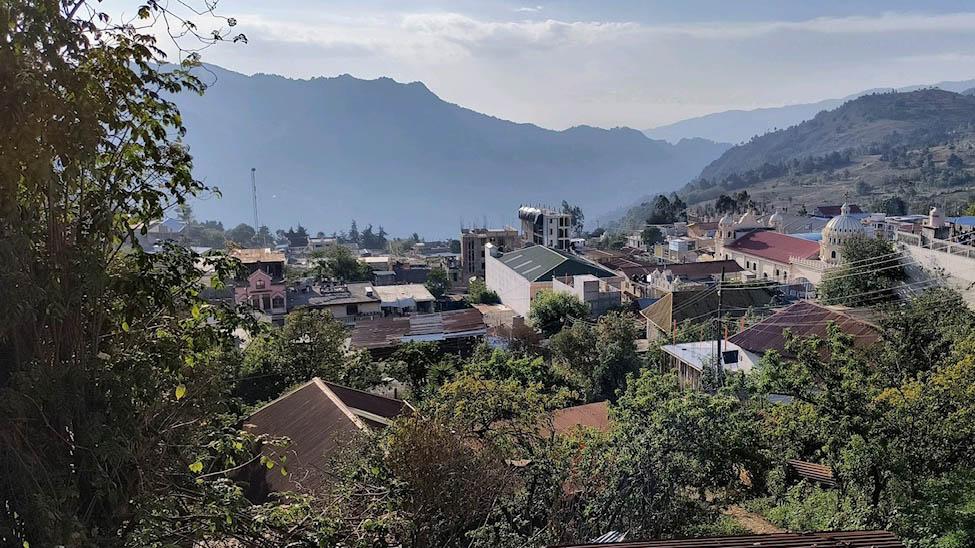Dear Friends,
I am sorry to miss the first Sunday of Lent with you, but I am in Guatemala for a planning meeting with the Leadership Team from Huehuetenango to plan this summer’s trip and to work on some long-range planning goals. I wish I could be in two places at the same time, but that is not yet possible for my level of spirituality.
A group of us began this Mission project just a bit over twenty years ago after being invited by Bishop Bobadilla to come and see his diocese. The visit was in response to something Pope John Paul II had written in his letter to the Church in the Americas following the Synod on America.
In the letter to the Church in the Americas, written in 1999, the Pope said, “The Special Assembly for America of the Synod of Bishops was the first ever to have gathered Bishops from the entire continent, and it was seen by all as a special grace of the Lord to the pilgrim Church in America. It strengthened the communion which must exist among the ecclesial communities of the continent, making clear to all the need for this communion to grow…The Bishops, whose duty it is to promote communion among the particular Churches, should encourage the faithful to live this communion more and more, and to assume the ‘responsibility of developing bonds of communion with the local Churches in other areas of America through education, the exchange of information, fraternal ties between parishes and dioceses, and projects involving cooperation and joint intervention in questions of greater importance, especially those affecting the poor’.”
Out of that directive from Pope John Paul, our sister relationship with the Diocese of Huehuetenango, called Ixim, was born. While I might have hoped for accomplishing great things by this point in the relationship, the reality is that the hard work of building projects across language and cultural barriers takes tremendous time and effort. The easiest thing, which so many groups end up doing, is to simply throw money at a problem. However, that has never been the approach of Ixim. Rather, Ixim’s approach is to build a friendship first and then to come up with an answer through the shared relationship.
Just so you know that this important Synod on the Americas did not just result in mission projects, here is a directive from John Paul that you can see coming to fulfillment in our Cabrini Communities: “Because of the particular problems they present, special attention needs to be given to parishes in large urban areas, where the difficulties are such that normal parish structures are inadequate and the opportunities for the apostolate are significantly reduced. The institution of the parish, however, retains its importance and needs to be preserved. For this, there is a need ‘to keep looking for ways in which the parish and its pastoral structures can be more effective in urban areas’. One way of renewing parishes, especially urgent for parishes in large cities, might be to consider the parish as a community of communities. It seems timely therefore to form ecclesial communities and groups of a size that allows for true human relationships. This will make it possible to live communion more intensely, ensuring that it is fostered not only ‘ad intra’, but also with the parish communities to which such groups belong, and with the entire diocesan and universal Church. In such a human context, it will be easier to gather to hear the word of God, to reflect on the range of human problems in the light of this word, and gradually to make responsible decisions inspired by the all-embracing love of Christ. The institution of the parish, thus renewed, ‘can be the source of great hope. It can gather people in community, assist family life, overcome the sense of anonymity, welcome people and help them to be involved in their neighborhood and in society’. In this way, every parish, and especially city parishes, can promote nowadays a more person-centered evangelization and better cooperate with other social, educational and community work. Moreover, ‘this kind of renewed parish needs as its leader a pastor who has a deep experience of the living Christ, a missionary spirit, a father’s heart, who is capable of fostering spiritual life, preaching the Gospel and promoting cooperation. A renewed parish needs the collaboration of lay people and therefore a director of pastoral activity and a pastor who is able to work with others. Parishes in America should be distinguished by their missionary spirit, which leads them to reach out to those who are faraway’.
So, if you are wondering where the idea for Cabrini Communities came from, you can blame Saint Pope John Paul II. He thought that the best way to be a parish in our secular world was to have small faith sharing groups – ecclesial communities. I am sure he would be proud of you!
Peace,
Fr. Damian



